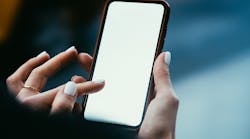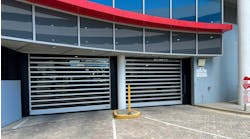Every generation, an event forces facility supervisors to holistically reconsider how to make commercial buildings most efficient and effective for users.
As a building operator, you may have implemented new security protocols; incorporated natural ventilation with mixed-mode heating, ventilating and air-conditioning (HVAC) systems; added creature comforts to accommodate changing demographics; lessened a building’s carbon footprint (and operating costs); and reconsidered how people enter and exit your buildings.
And, of course, you have considered how smartphones and other emerging technologies evolve and impact how people experience your facility.
Ultimately, the goal is the same—maximizing each building’s longevity and utility for tenants or users. Today, all those elements are converging. Making sure you operate healthy buildings is key to the visitor experience and employee productivity. While there are many factors, avoiding unnecessary contact with physical items is central to keeping people from getting ill, whether from COVID-19 or the flu.
[Related: How Your Lobby Should Look Post-COVID]
What Are Healthy Buildings?
A healthy building encompasses a wide range of concepts and applications focused on allowing occupants to operate at the highest possible level of functionality. A healthy building supports the physical, psychological, and social wellbeing of people in the building and its immediate environment. While your building can be certified under the WELL Building Standard or Fitwel, this step is not necessary to take steps toward increasing inhabitant wellbeing.
Supporting physical health is important, as Americans spend 87% of their time indoors where pollutant levels are higher. Designing for health takes into account comfort, natural light, low background noise, easy access to nutritious foods and healthy drinking water, exercise facilities, ergonomics, and effective ventilation. Ultimately, anything you can do to make employees feel safe from all risks will increase productivity, creativity and morale.
[Related: Simplify Access Control with Smartphones]
Touchless Technologies Further Enhance Building Health
It is important for people to work together. It is proven to foster collaboration and innovation. To keep people healthy in a shared workspace, we need to set up systems that avoid unnecessary physical contact.
Enter touchless technology. While they are getting a lot of attention today, these tools are not new. Dating back to the early 1980s, the concept of touchless technology gained steam commercially thanks to RFID, while Sega’s Graphics Board proved consumer interest. With traditional computing, people need to interact directly with a computer to control it, whether that is typing on a keyboard or tapping a touchscreen. Touchless simply means computers can recognize remote devices, gestures, audio or movement as commands.
Consider your experiences checking into a flight. Twenty years ago, you would have needed to speak with a clerk at the counter. Then you checked yourself in via kiosk (and were annoyed if you needed to go to the desk). Then it evolved to checking in via web browser and today directly from your smartphone.
This is how workplace reception will evolve. By reducing the number of people in the reception area you reduce the risk of illness. No-touch visitor management systems will keep inhabitants of your building productive and guests happy too. These systems are already available and can send instant reception notifications by voice call, text message, email or instant message.
They can also capture health questions and log visits for contact tracing. This emerging technology ensures visitors are able to complete the entire check-in process from finding and selecting their host to entering required information about themselves, or from taking a photo to electronically signing legal documents. When the process is complete, hosts will be notified. All of this works exactly as if the visitor had used a kiosk or interacted with a front desk clerk.
Once inside the workplace, smartphone or biometric-based access control might allow doors to open automatically for employees and visitors authorized to enter an area. Gesture controls and voice recognition will allow people to set up a conference room without touching shared surfaces. And touchless payment systems like Apple Pay or Amazon Go Grocery stores can allow everyone to complete financial transactions. Meanwhile, motion detection and robot security guards will monitor the premise, while drones survey the exterior.
Keeping inhabitants healthy is perhaps the biggest factor in promoting productivity. Combining the healthy building concept with available touchless technologies will get people working together without spreading germs. This will create a safe environment and further peace of mind.
About the Author:
Dave Milliken is the founder of Denver-based Greetly.
Read next: 5 Important Tasks for Reopening Buildings During COVID-19



